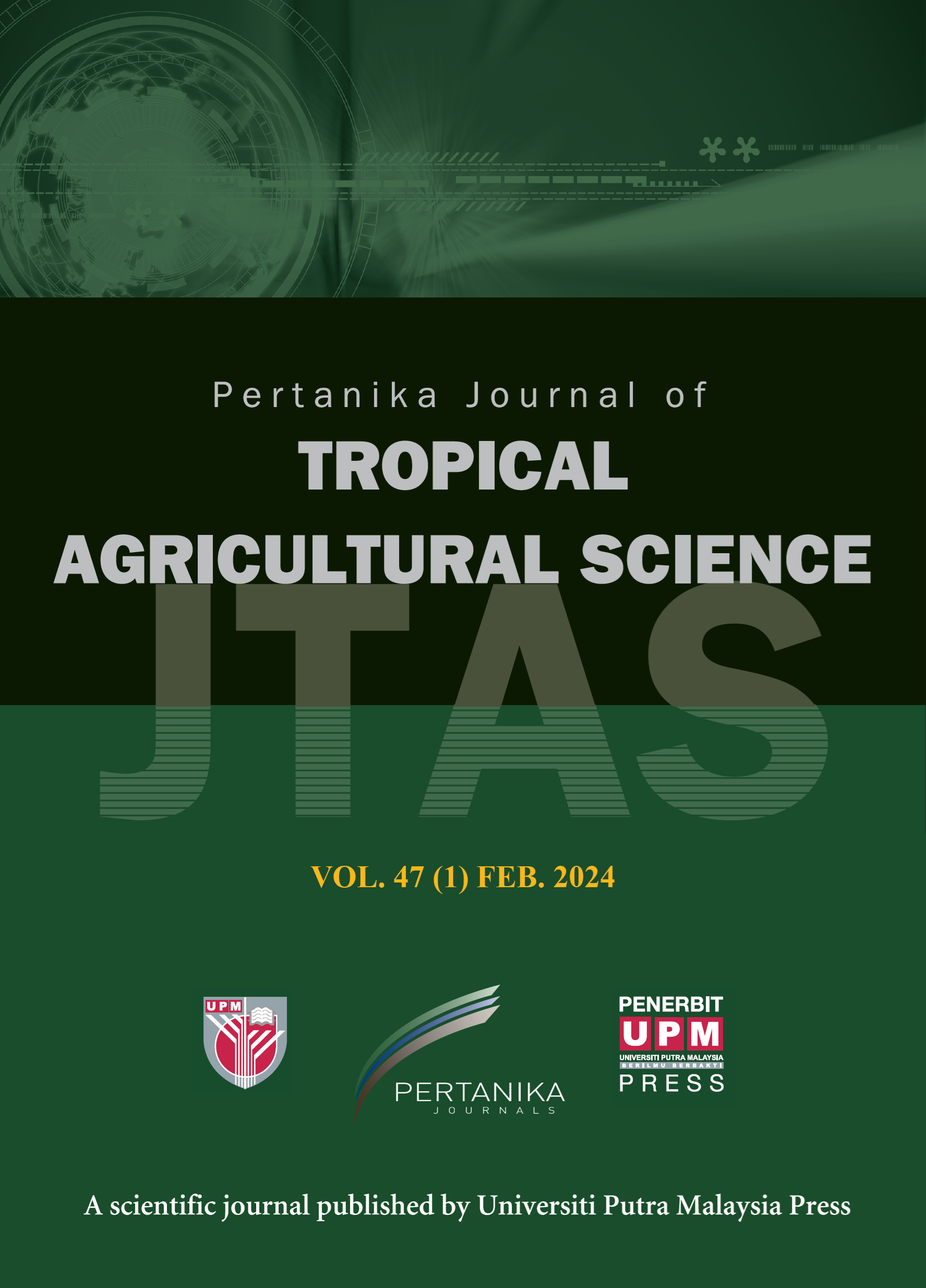PERTANIKA JOURNAL OF TROPICAL AGRICULTURAL SCIENCE
e-ISSN 2231-8542
ISSN 1511-3701
Short Communication: Ethnic Differences in the Prevalence, Clinical Outcome and cag Pathogenicity Island (cagPAI) Virulence Gene Profiles of Helicobacter pylori Strains from Malaysia
Hamat, R. A., Nor Amalina, E., Malina, O., Zamberi, S., Alfizah, H., Rizal, A. M., Aminuddin, A. and Ramelah, M.
Pertanika Journal of Tropical Agricultural Science, Volume 36, Issue 4, November 2013
Keywords: Helicobacter pylori, cag pathogenicity island, virulence genes, peptic ulcer diseases, non-peptic ulcer dyspepsia, ethnicity, Malaysia
Published on:
Different Helicobacter pylori genes may be well conserved within different ethnic groups and could give rise to different clinical outcomes. In this study, we demonstrated a low prevalence of H. pylori infection (19.2%) which is in concordance with the current trend demostrated locally and abroad. The Indians had the highest prevalence of H. pylori infection among other ethnic groups (Malays= 8.6 %, Chinese= 24.3 %, Indians= 33.9%). cagM and cagT were the most predominant genes found (63.4% for each), followed by cagA (62.2 %), cagE (48.2%), cag6-7 (46.3%), cag10 (42.1%), cag13 (4.9%) and IS605 (3.7%). No significant association was found between H. pylori infection and H. pylori genes with ethnic groups or clinical outcomes. Indians who had a combination of cagA/ E/M genes of H. pylori were likely to be associated with 21-time of having non-ulcer dyspepsia (NUD) than peptic ulcer disease (PUD). Therefore, these genes may serve as useful markers in predicting the clinical presentation of a H. pylori infection among Indians in our studied population. Hence, this preliminary data might explain why Indians have a low prevalence of gastric cancer and peptic ulcer disease despite having persistently high prevalence of H. pylori infection for many decades (“Indian enigma”) in Malaysian patients.
ISSN 1511-3701
e-ISSN 2231-8542




